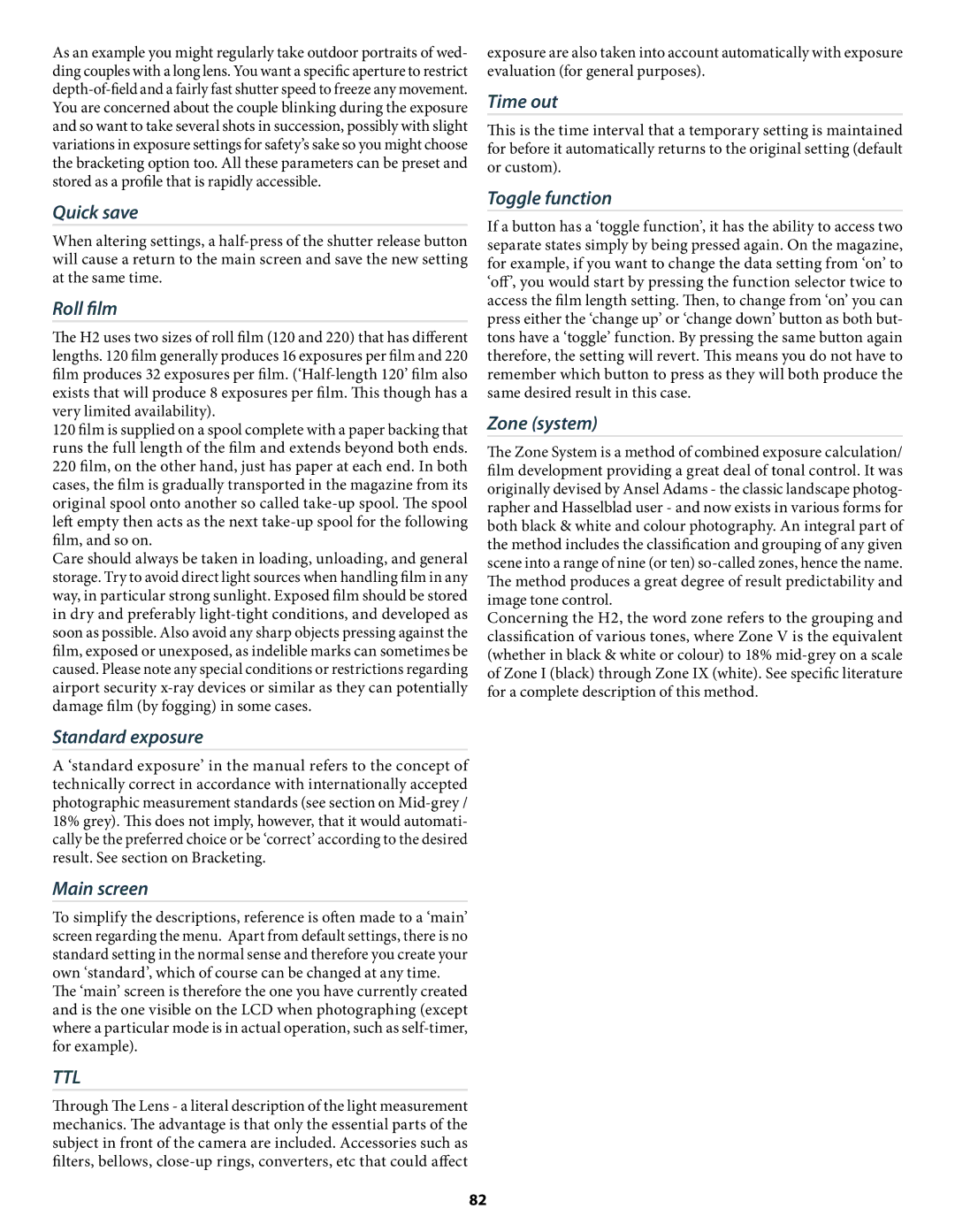
As an example you might regularly take outdoor portraits of wed- ding couples with a long lens. You want a specific aperture to restrict
Quick save
When altering settings, a
Roll film
The H2 uses two sizes of roll film (120 and 220) that has different lengths. 120 film generally produces 16 exposures per film and 220 film produces 32 exposures per film.
120 film is supplied on a spool complete with a paper backing that runs the full length of the film and extends beyond both ends. 220 film, on the other hand, just has paper at each end. In both cases, the film is gradually transported in the magazine from its original spool onto another so called
Care should always be taken in loading, unloading, and general storage. Try to avoid direct light sources when handling film in any way, in particular strong sunlight. Exposed film should be stored in dry and preferably
Standard exposure
A ‘standard exposure’ in the manual refers to the concept of technically correct in accordance with internationally accepted photographic measurement standards (see section on
Main screen
To simplify the descriptions, reference is often made to a ‘main’ screen regarding the menu. Apart from default settings, there is no standard setting in the normal sense and therefore you create your own ‘standard’, which of course can be changed at any time.
The ‘main’ screen is therefore the one you have currently created and is the one visible on the LCD when photographing (except where a particular mode is in actual operation, such as
TTL
Through The Lens - a literal description of the light measurement mechanics. The advantage is that only the essential parts of the subject in front of the camera are included. Accessories such as filters, bellows,
exposure are also taken into account automatically with exposure evaluation (for general purposes).
Time out
This is the time interval that a temporary setting is maintained for before it automatically returns to the original setting (default or custom).
Toggle function
If a button has a ‘toggle function’, it has the ability to access two separate states simply by being pressed again. On the magazine, for example, if you want to change the data setting from ‘on’ to ‘off’, you would start by pressing the function selector twice to access the film length setting. Then, to change from ‘on’ you can press either the ‘change up’ or ‘change down’ button as both but- tons have a ‘toggle’ function. By pressing the same button again therefore, the setting will revert. This means you do not have to remember which button to press as they will both produce the same desired result in this case.
Zone (system)
The Zone System is a method of combined exposure calculation/ film development providing a great deal of tonal control. It was originally devised by Ansel Adams - the classic landscape photog- rapher and Hasselblad user - and now exists in various forms for both black & white and colour photography. An integral part of the method includes the classification and grouping of any given scene into a range of nine (or ten)
Concerning the H2, the word zone refers to the grouping and classification of various tones, where Zone V is the equivalent (whether in black & white or colour) to 18%
82
